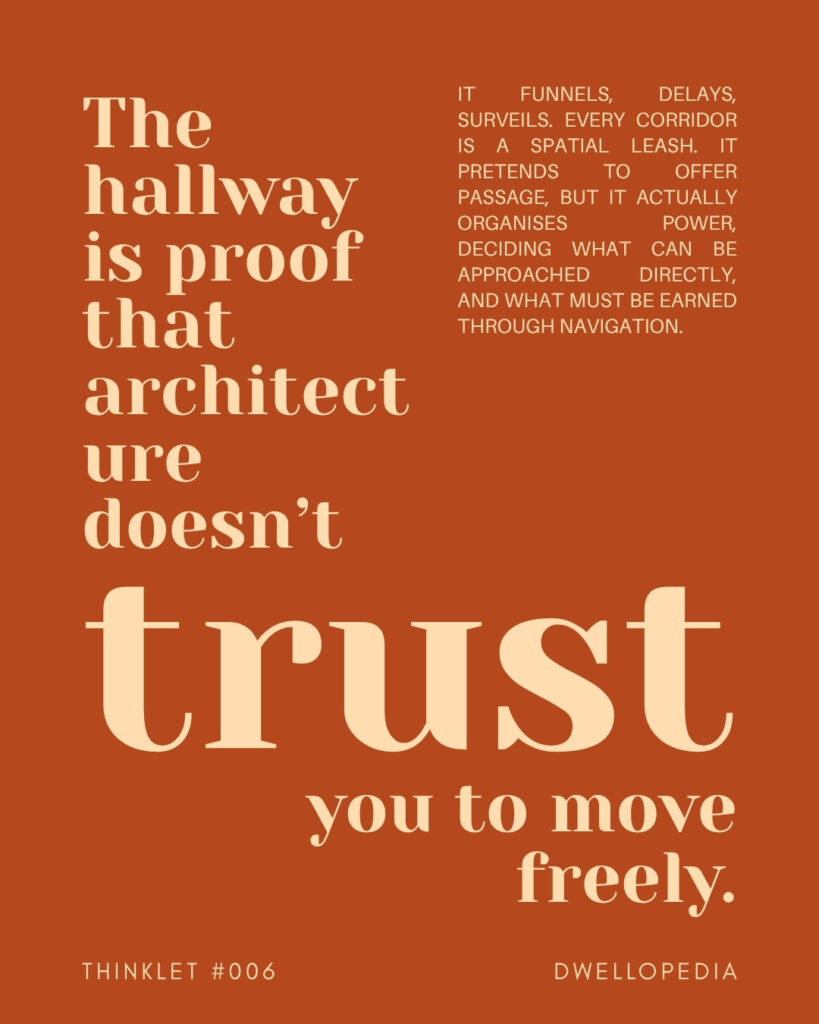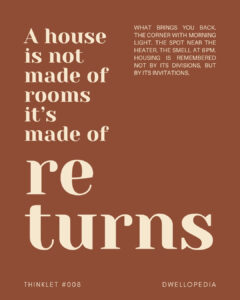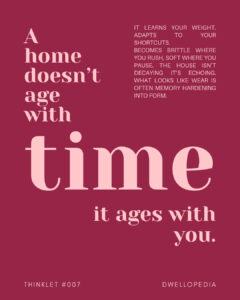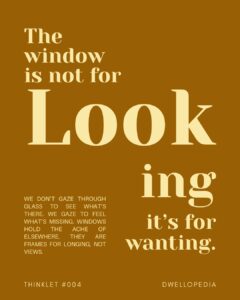To move freely is often taken for granted—an effortless dance through space where the body and mind flow unimpeded. Yet, within the architecture of the home, movement is rarely neutral or free. Corridors, those seemingly simple conduits, are far more than mere passageways. They funnel, delay, and surveil. Each corridor is a spatial leash, choreographing the inhabitant’s body and presence in subtle, often unseen ways. What pretends to offer freedom of movement in fact organizes power—deciding what can be approached directly, and what must be earned through careful navigation.
Have you ever noticed how the width of a hallway can quicken or slow your pace? How light and shadow play across its surfaces, guiding or restricting your gaze? Where sightlines are allowed to stretch or abruptly cut short? These design decisions—embedded in spatial rhythm and scale—whisper controls that regulate our bodies as much as our minds. With every step down a corridor, we enter a quiet discipline, managed by our environment more than we realize.
This quiet choreography shapes not only physical movement but also emotional experience and social dynamics. The corridor is a microcosm of power relations, encoded spatially, asking who belongs, who waits, who proceeds. In housing design, circulation is rarely neutral—it is an invitation or a restriction, a negotiation between openness and control.
Housing Unfolded: Transforming the Practice
Reimagining corridors as spaces that choreograph presence rather than merely provide circulation demands a radical shift in housing design. Corridors can no longer be afterthoughts—narrow, dimly lit passages squeezed between rooms. Instead, they must be acknowledged as dynamic spatial agents that shape inhabitant movement, emotion, and social interaction.
How might architects design corridors that respect bodily rhythms and invite pause rather than hurry? Imagine corridors with generous widths that allow simultaneous movement, fostering encounters instead of isolation. How could light and material be employed to soften transitions, to create moments of rest and reflection within movement? The play of natural and artificial light along a corridor’s length might create a sensory journey—welcoming, surprising, comforting.
Spatial complexity can transform corridors from restrictive lines into layered, inhabited spaces. Alcoves, niches, changes in ceiling height or flooring texture may enrich the corridor experience, breaking monotony and inviting engagement. Could such details foster intimacy and belonging, making corridors a canvas for personal and communal narratives rather than zones of passage?
Socially, corridors mediate access and privacy. They can enable community or enforce separation. How might housing layouts be reconsidered to blur harsh boundaries, to create gradients of public and private space mediated through thoughtful corridor design? Might corridors become shared social spaces or safe refuges, rather than barriers and bottlenecks?
On the cultural level, corridors carry symbolic weight, reflecting hierarchies and control. Rethinking their design offers a chance to challenge power dynamics embedded in space. How might architects design corridors that democratize movement and visibility, promoting equity and inclusion?
Design thinking itself must evolve, embracing corridor design as integral to spatial experience rather than peripheral. This demands empathetic, iterative approaches that center human scale and movement, supported by research into embodied experience. How might this reshape architectural education and professional practice?
Beyond individual homes, corridor design impacts urban fabric—hallways between buildings, streets as corridors of social flow. How does this thought ripple outward to influence neighborhood and city-scale design, shaping how communities move, meet, and relate?
This reimagining transforms housing from static shelter to living choreography—spaces that move bodies and spirits with care, openness, and respect.
Beyond Boundaries: Layered Understandings
The thought that corridors manage movement as spatial leashes opens multiple interpretive avenues.
From sustainability, corridors as lived spaces encourage compactness with quality. Can corridors balance environmental efficiency with generous, humane scale? How might natural ventilation and daylighting in corridors contribute to ecological design goals?
Social equity highlights corridors’ role in access and inclusion. Narrow, dim corridors disproportionately affect people with disabilities or mobility challenges. How can corridor design promote universal access and dignity? What cultural narratives influence corridor design norms, and how can they be challenged?
Memory and identity speak to how corridors carry histories—pathways of childhood, migration, domestic rituals. Can corridor design honor these temporal layers, embedding stories into spatial experience?
Technology introduces smart environments where corridors might adapt to inhabitant needs—lighting, temperature, sound—yet risks standardization that flattens spatial richness. How can technology deepen, not diminish, corridor experience?
Each lens reveals corridors as rich sites of layered meaning—ecological, social, cultural, technological—calling for nuanced, interdisciplinary architectural thought.
Conclusion
To say “move freely” within corridors is to challenge the quiet discipline that often shapes our bodies and lives. This thinklet plants a seed for architects and thinkers to reimagine corridors as liberating spaces—dynamic passages that honor human rhythm, invite presence, and democratize movement.
In every step along a corridor, there is potential for freedom or constraint, invitation or restriction. The corridor’s silent choreography calls for awareness, care, and poetic design that transcends mere functionality.
As you ponder this thought, ask: How might your designs craft corridors that nurture movement, connection, and belonging rather than regulate and confine? How will you listen to the whispers corridors speak—of power, presence, and possibility?
The power of this thinklet is not in answers but in opening space for wonder and questioning. What will it mean to create homes where every corridor is a path to freedom, not a leash?







